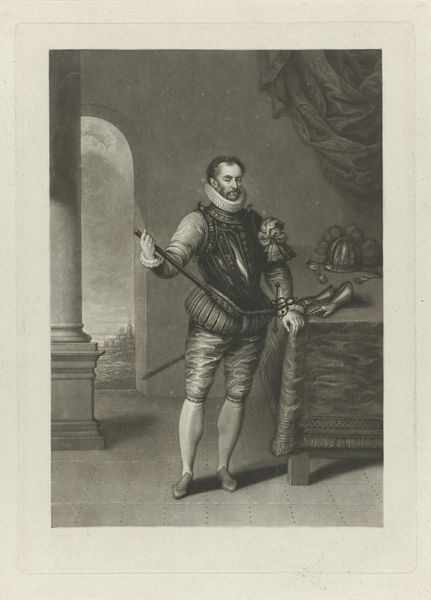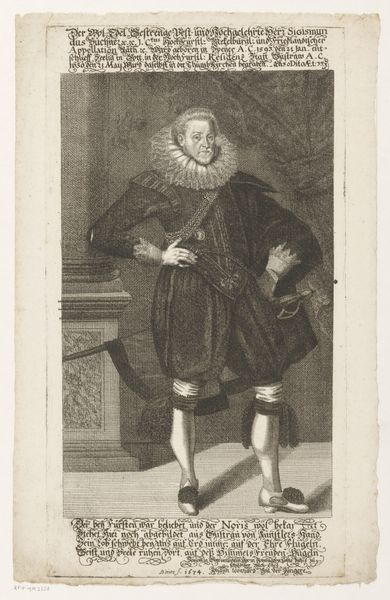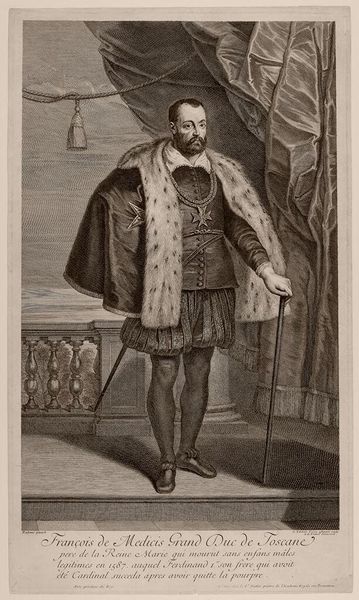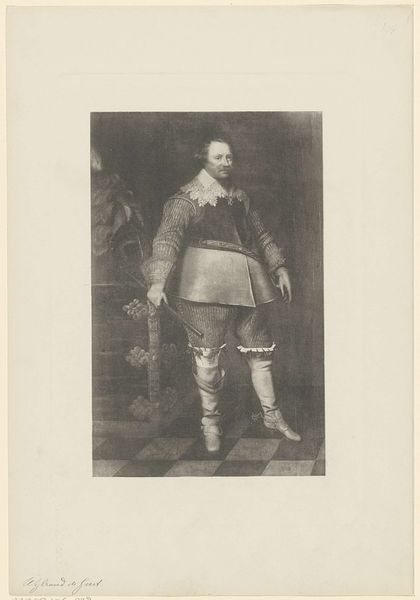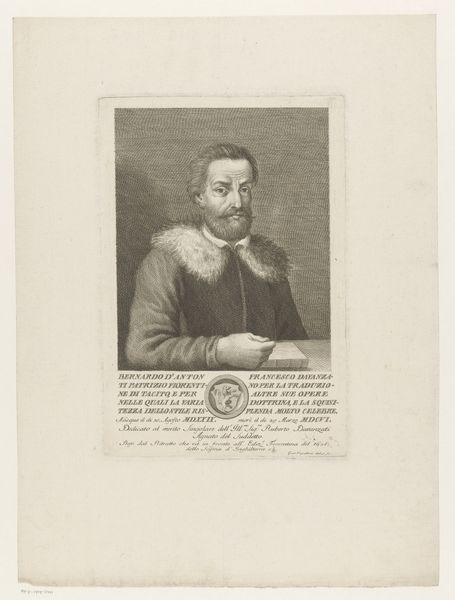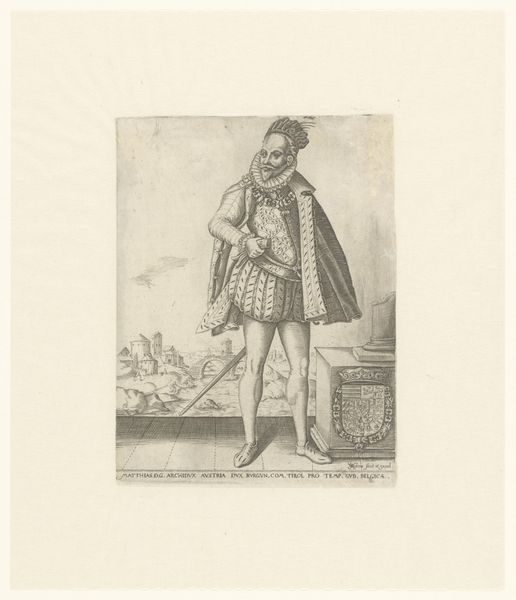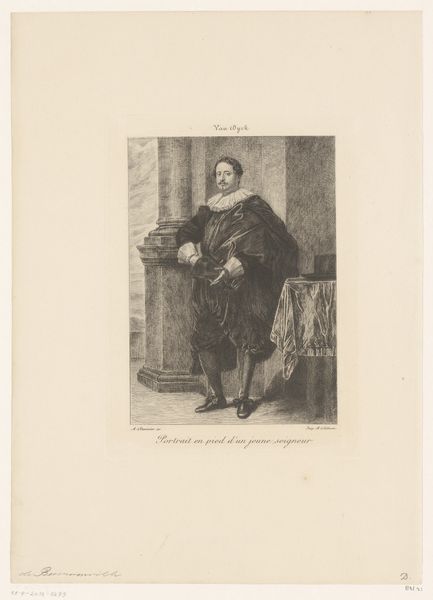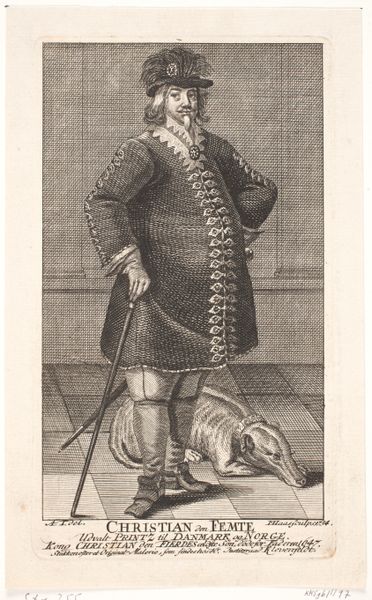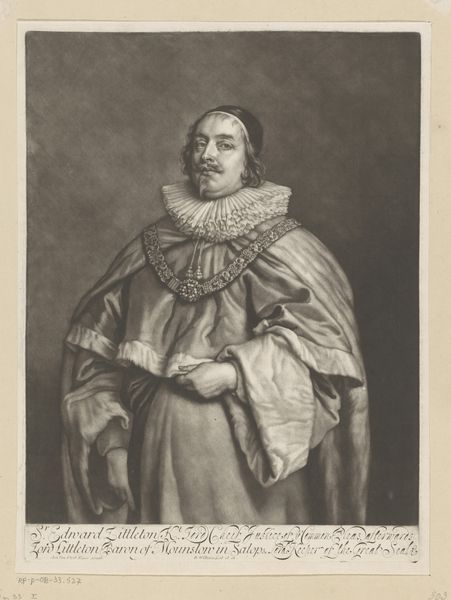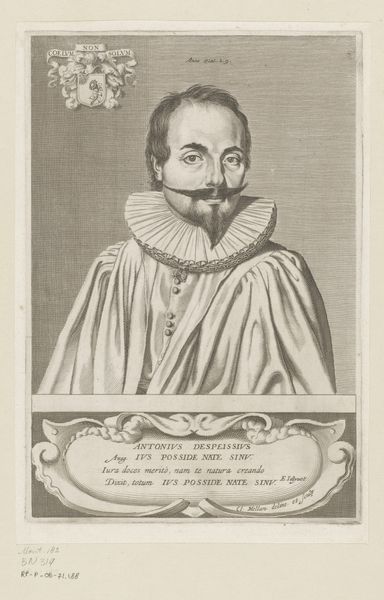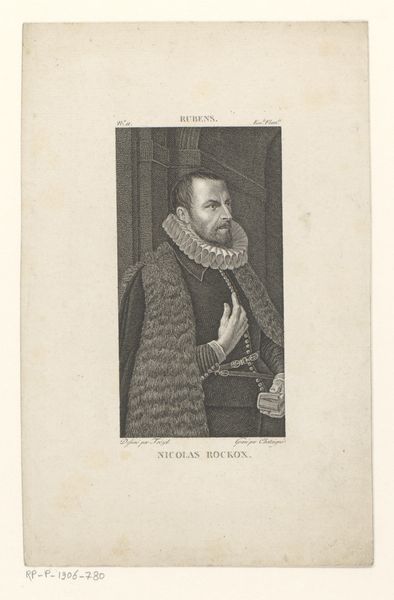
Dimensions: height 530 mm, width 330 mm
Copyright: Rijks Museum: Open Domain
Curator: Looking at this rather grand engraving, "Portret van Diego Sarmiento de Acuña," created around 1810-1820, I'm immediately drawn to the stark contrasts in tone achieved with the engraving technique. There's an almost sculptural quality to how the light catches on the fabric and metal elements. Editor: My first impression is how firmly this image speaks of power and hierarchy. The man’s pose, his attire, the carefully placed hat—it's a clear assertion of his place in a system. Considering the subject and era, it feels important to read beyond mere aesthetic appreciation. Curator: Absolutely. Considering that it's an engraving, the level of detail achieved by the printmaker is astonishing. Think about the process – each line, each tone meticulously created through laborious carving, not just by artistic inspiration, but physical exertion, skill, and labor. Editor: That painstaking process you describe—the translation from courtly portrait to engraved image—also filters access, though, doesn’t it? Who had access to this image, and what statement did that circulation make about status and social networks in the 19th century? This speaks of visibility and perhaps even, control. Curator: Precisely! Access wasn't universal, highlighting the control that the upper classes held over representation. It reinforces the divide between those who could afford such representations and those who likely never encountered such refined artistic consumption. We have to appreciate this image as more than simply an item, but also the work that it demanded and represented within society. Editor: And in studying this portrait, it feels important for us to think critically about the historical moment it occupies. Diego Sarmiento de Acuña lived during the Spanish Golden Age; what might it mean for a nineteenth century image of him to recall the figures, and perhaps even ideologies, of earlier eras? What were the printmakers attempting to capture and celebrate about Spain's global presence? Curator: A compelling perspective! For me, understanding its construction gives me so much more insight into the subject represented in the image itself. Editor: Seeing the work through this lens is critical because it challenges conventional boundaries and makes these images from the past even more valuable to today’s society.
Comments
No comments
Be the first to comment and join the conversation on the ultimate creative platform.

